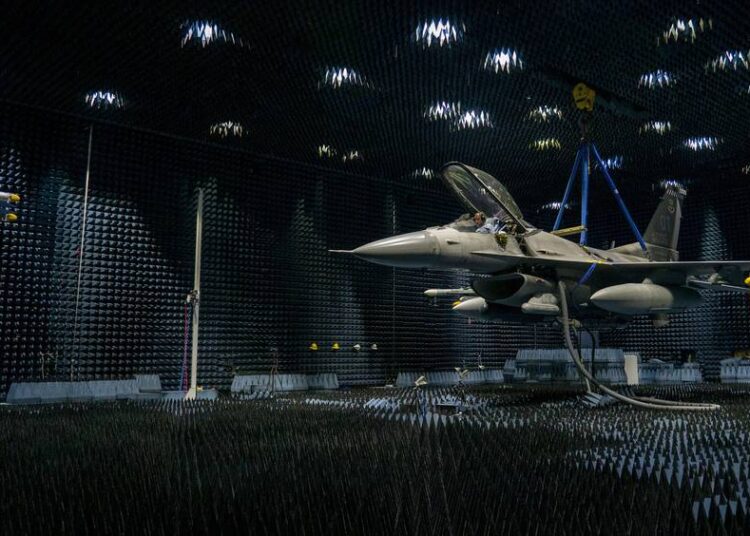WASHINGTON — A ferocious feline may help transform how the U.S. military approaches electronic warfare.
The so-called Angry Kitten, a cluster of electronic components contained in a vaguely cat-shaped tube, has proved so successful as a training tool in simulating enemy EW actions that officials with Air Combat Command recommended at least four pods be reworked for use in actual combat, allowing fighter pilots to benefit in the real world.
The Air Force has used Angry Kitten in tests and training for years, outfitting aggressor squadrons with the gear to harass trainees and replicate electronic assaults. Lessons learned from using the device have “dramatically shaped the direction” of the service, it said Aug. 3.
During evaluations this year, Angry Kitten kit was reprogrammed overnight to account for conditions previously encountered, meaning techniques used the next day were both better informed and more effective. The quick turnarounds are a departure from the Air Force’s traditionally rigid software-hardware coupling that take time and money to retool.
“The hardware and software stovepipe solutions prevalent throughout the Air Force enterprise significantly impair the Air Force’s ability to quickly adapt and defeat new emerging electromagnetic systems threats,” said Keith Kirk, who manages a campaign known as AERRES, experiments aimed at developing app-enabled EW systems.
With Angry Kitten, “software was updated within hours based on the performance they were seeing against certain threats and then was improved, and those improvements were verified during flight test the following day,” he said in a statement. “That’s really tough to do with software and tools that are not designed to open standards.”
The on-the-fly changes were made possible by an open-ended design that the Air Force expects to increasingly employ in the future.
The Angry Kitten Combat Pod was tested last year at the Northern Lightning exercise, as well. The Air Force at the time said teams identified avenues to convert the pod from trainer to battle-ready. Recent feedback will inform a potential fielding decision.
The combat pod is derived from technology developed by the Georgia Tech Research Institute, which in 2013 said the project used commercial electronics, custom hardware and novel machine-learning to provide “unprecedented levels” of adaptability.
Researchers referred to the matter as cognitive EW, systems that use machine learning and other sophisticated tech to select a means of jamming, analyze its effectiveness and then self-correct to exploit identified weakness. The practice is different than deploying chaff, material used to confuse radar, or other more-common measures.
Dominating the electromagnetic spectrum will be critical in a fight with China or Russia, the two most significant national security threats, according to U.S. officials. Modern warfare relies heavily on the spectrum, which is used to communicate with friendly forces, to identify and suppress opponents, and to guide weapons.
Angry Kitten’s less-than-fearsome name — a far cry from the aggressive monikers the military often uses, such as Reaper or Predator drones or Hellfire missiles — is a mix of inside joke and design goals, according to a 2013 Newsweek report, which noted “the system reacts with ‘the mind of a cat.’”
“Despite having an admittedly slightly silly name, Angry Kitten represents very serious technology,” Roger Dickerson, senior research engineer with the Sensor and Electromagnetic Applications Laboratory at the Georgia Tech Research Institute, told C4ISRNET in 2015. “We’ve been working hard to improve the capabilities and the readiness of the war fighters in our sponsor organizations: the Army, the Navy and especially the U.S. Air Force air combat community.”
Colin Demarest is a reporter at C4ISRNET, where he covers military networks, cyber and IT. Colin previously covered the Department of Energy and its National Nuclear Security Administration — namely Cold War cleanup and nuclear weapons development — for a daily newspaper in South Carolina. Colin is also an award-winning photographer.
Read the full article here

